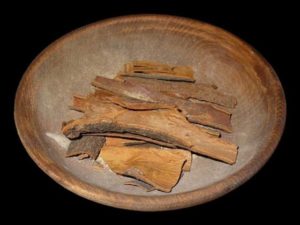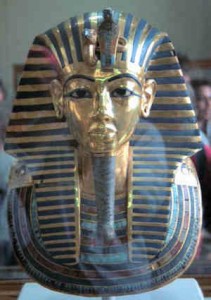The Cinnamon Code

We tend to think of the ancients as travel challenged. They didn’t have airplanes, so they didn’t get around. This is patently false, but it helps to reinforce the way we study history. Different university departments specialize in different ancient peoples and areas. It is, therefore, in everyone’s interest, to keep the ancients apart. For example, the people of the ancient Aegean e.g., Mycenaeans, are studied in Classics departments by experts in ancient Greece. Egyptologists, of course, study Egypt. And Biblical scholars study ancient Israel. The latter study Biblical Hebrew, the Egyptian scholars study hieroglyphics and the experts in the area of ancient Greece grapple with scripts such as “Linear A” and “Linear B”. It’s all very specialized, so it is in everyone’s interest that the ancient Mycenaeans, Israelites and Egyptians did not mix. But, again, this is patently false.
One of the best ways to follow the trails the ancients left behind is to track down items they considered precious. So, for example, we find lapis lazuli, the blue stone that we discover in so much Egyptian royal jewelry, comes all the way from Afghanistan! Amber comes from Denmark. And the tin that’s necessary to make bronze (as in the “Bronze Age”), comes from Cornwall, on the British Isles. And now, in Israel, they discovered 3,000 year old cinnamon!

This spice – which was apparently used for the incense mixture (Exodus 30:23) that burned in the Temple of God in Jerusalem – came all the way from India! Scientists recently found it in vessels that were discovered in the ancient port of Dor on the Mediterranean coast. 27 flasks from 5 archaeological sites in Israel were tested. 10 of them contain cinnamaldehyde, the compound that gives cinnamon its flavour. Perhaps it was brought here by the Biblical Danites, which the prophetess Deborah describes as seafarers (Judges 5:17). Those Danites got around. Some have speculated that the people we call Mycenaeans, which Homer calls “Danoi”, are kissing cousins of the Biblical Danites. Some have speculated that these people sailed as far north as Denmark, named after them, along various water routes such as the Danube and the Don, also named after them. Maybe they were also part of a trading chain that brought cinnamon to Israel. Imagine that; 3,000 year old cinnamon, and it made its way to Israel around the time King David was ruling the land. Now it has resurfaced to remind us that though modern specialists don’t mix, ancient people did.
See: http://www.nbcnews.com/science/evidence-3-000-year-old-cinnamon-trade-found-israel-6C10970147
Click here to see my recent article “History Envy” on The Times of Israel.

